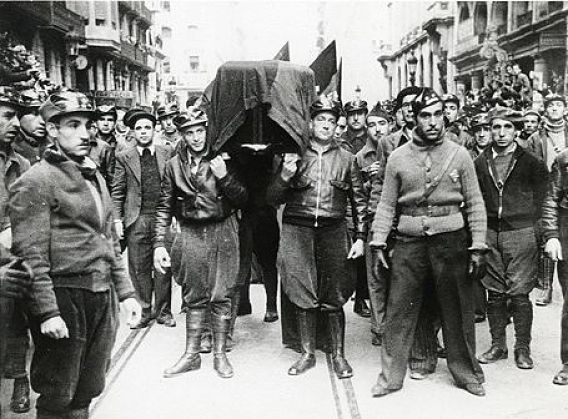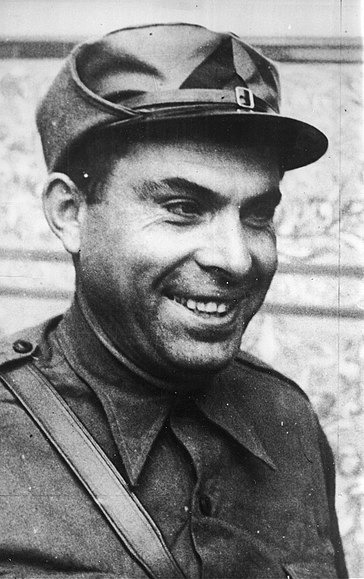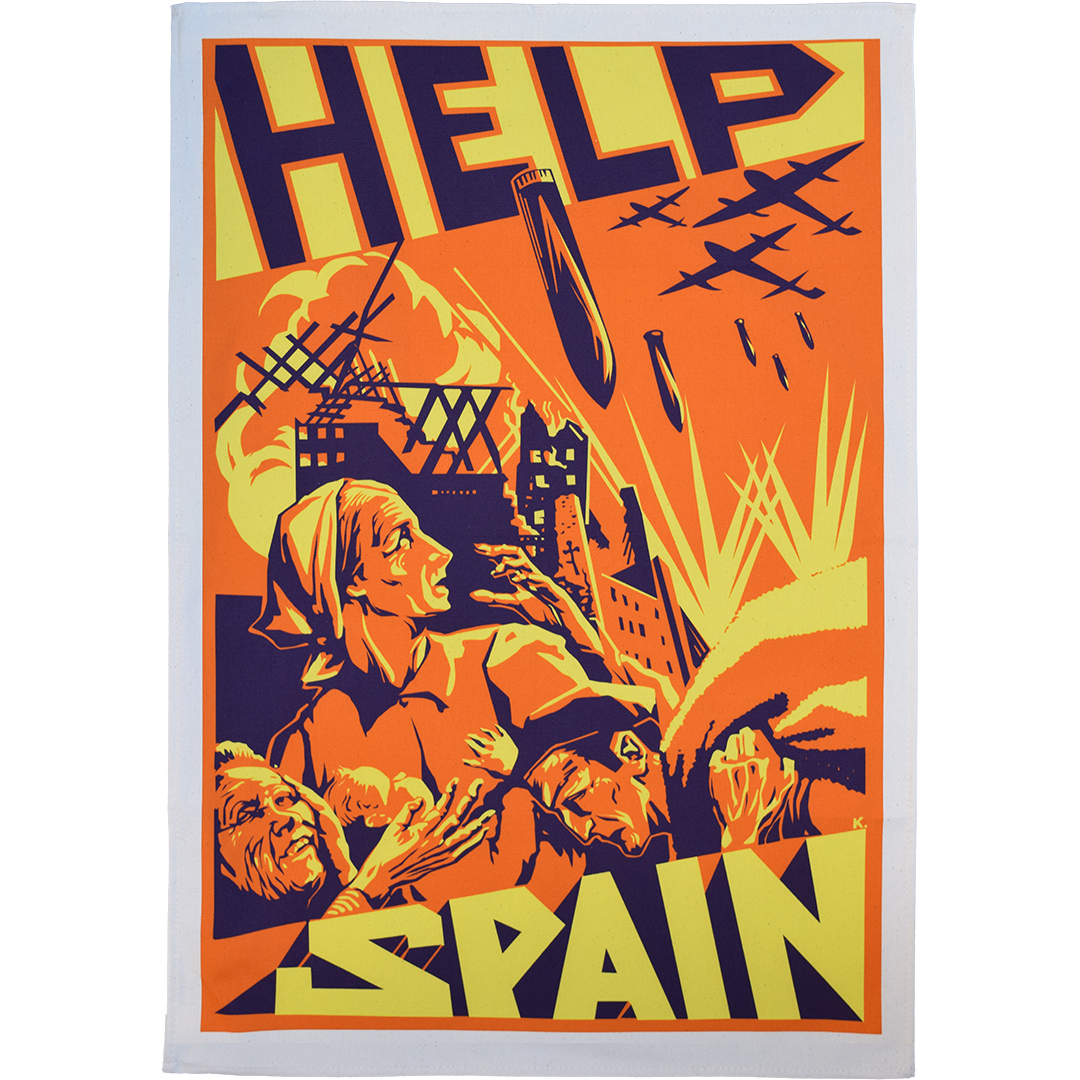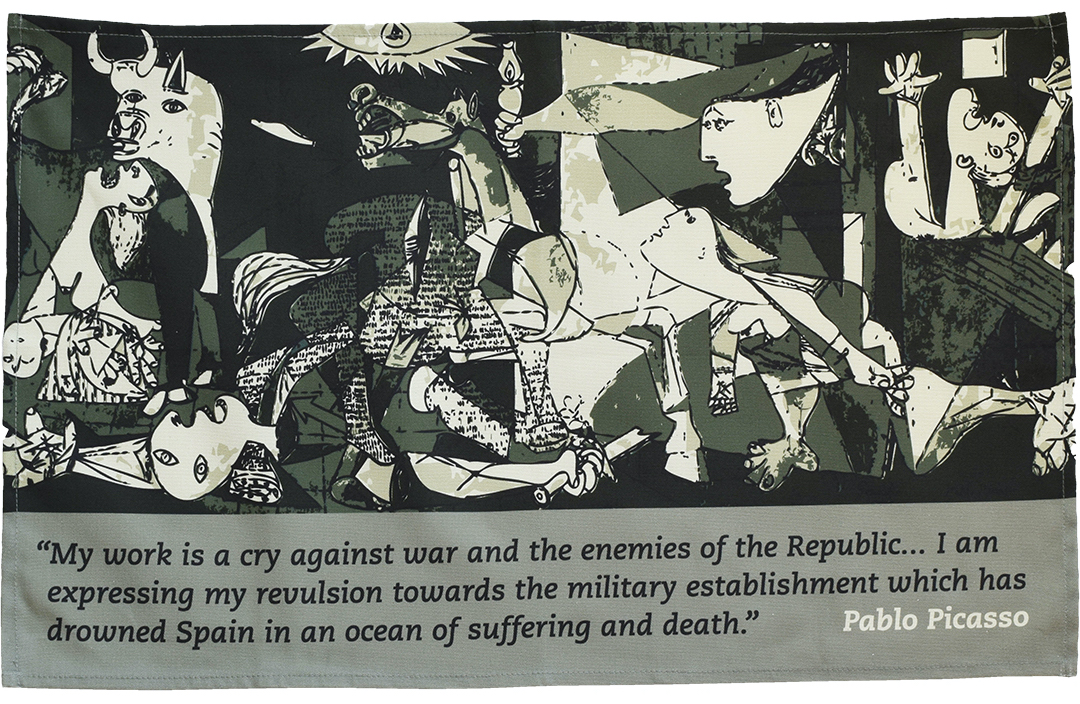How to Fight Fascists: The Story of Buenaventura Durruti
Posted by Pete on 20th Nov 2023

Killed in action on this day in 1936, Durruti led 6,000 Anarchists in the fight against Francisco Franco
“We carry a new world in our hearts.”
The Spanish Civil War made strange bedfellows.
All sorts of political movements mobilised in defence of the democratically-elected Spanish government when General Francisco Franco launched his fascist rebellion in 1936.
Catalan and Basque nationalists fought alongside the Spanish Republic. Communists and Anarchists, for a time, put aside their rivalry to unite against the Right.
Anarchism had been uniquely strong in Spain since the late nineteenth century. And one Buenaventura Durruti (1896-1936) emerged from this radical milieu as the iconic leader of Spanish Anarchism during the Civil War.

Born in 1896, Durruti became the leading figure of Spanish Anarchism during the Civil War
Durruti was born into a working-class family in the city of León in the northwest of Spain. He worked on the railyard there from the age of 14 and was soon active in trade union politics.
Durruti took part in the socialist-led strike wave of August 1917, when the Spanish government deployed the army in León.
Seventy of Durruti’s fellow railworkers were massacred, and two-thousand were imprisoned without trial.
It was now that Durruti lost all faith in the Spanish state. He saw it as an uncompromising ally of big business and therefore a mortal enemy of the working class.
Exiled in France, Durruti made contact with Spanish Anarchists and joined their political movement.
Our Help Spain tea towel is based on a campaign poster by The Artists International Association in Britain encouraging people to sign up and fight fascism in Spain
In-between spells of political exile, Durruti snuck back into Spain and helped to organise covert Anarchist cells in Barcelona.
He soon became a prominent figure on the revolutionary wing of the Anarchist trade union confederation, the CNT-FAI, which became the main organ of Anarchist military resistance to Franco.
Durruti was in Barcelona when the Spanish Army mutinied against the Republic in July 1936 – a crisis moment for the left-wing defenders of democracy in Spain.
With much of the regular army betraying the Republic, Franco’s coup might have succeeded in the blink of an eye unless armed resistance was mobilised – and mobilised quickly.
Buenaventura Durruti was essential to this effort in Barcelona and the rest of Catalonia.
With the local army general, Manuel Goded, trying to seize the region for Franco, Durruti allied with local Communists, Trotskyists, and other working-class groups to defeat him.
The workers were armed and sent to the front. They drove Goded and his rebels out of Barcelona.
With the Civil War now in full flow, the ‘Durruti Column’ was formed.
Horrific events like the bombing of Guernica united many in Spain and around the world in the struggle against fascism
The most famous Anarchist military unit of the Civil War, the Durruti Column grew to 6,000 troops.
They had a rigorously democratic command structure, with elected officers who could be voted out by the rank-and-file soldiers.
Durruti became the ‘General Delegate’ of the Column, whose revolutionary motto was: “We carry a new world in our hearts.”
The Durruti Column attracted left-wing volunteers from all over the world.
Athletes from the People's Olympiad in Barcelona – a radical counter-event organised in protest against the Berlin Olympics in Nazi Germany – went straight from the stadium to take up arms in defence of the Spanish Republic.
As in the Communist-run International Brigades, the foreign volunteers formed their own sections in the Durruti Column, named after famous anarchists like the Italians, Sacco and Vanzetti.
After defending Barcelona against the fascists, Durruti led the column to Nationalist-held Zaragoza. The Anarchists fought hard but were unable to liberate the town.
Then, in November 1936, the Durruti Column quickly redeployed to Madrid, which had been besieged by Franco’s legions.
The Column was key to holding the capital, although Buenaventura Durruti himself didn’t live to see the victory. He was killed in action on 20 November 1936, at the height of the battle.
Despite the later overthrow of the Spanish Republic, the early feats of Durruti and his Column during the Spanish Civil War remain a major chapter in the modern history of anarchism, when a multinational coalition of anarchist volunteers came together and stood against fascism in Spain.


